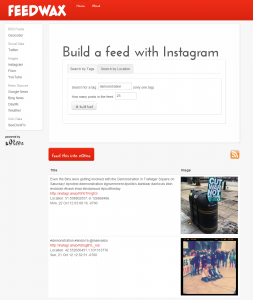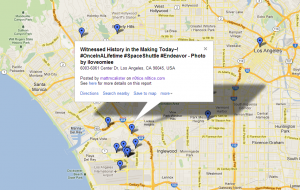Market transitions in digital media can be absolutely fascinating both as a bystander and as a participant.
I’ve been on both the frontfoot and the backfoot as part of media businesses trying to lead, fast-follow, steer away from or kill different technologies and services that come and go.
Transitioning seems to be part of being in this business, something you’re always doing, not the end game.
There are a few patterns I’ve observed, but i’m hoping some clever business model historian will do some research and really nail down how it works.
There are job training issues that people face. Remember all those Lotus Notes specialists? Organizational issues. How about when the tech teams finally let editors control the web site home page? Leadership issues. It wasn’t until about 2003 before media CEOs started talking openly aout the day when their Internet businesses would overtake their traditional businesses. Technology strategies. Investing in template-driven web sites was once a major decision. Etc.
The mobile wave we’re in right now shares all the same issues for people who are in the business of running web sites. Re-educate your developers or hire new ones? Should mobile be a separate business; should it be added to the queue for the tech team; should the editors or product managers manage it? Is mobile-first a subset of digital-first or does it mean something more profound than that? Responsive, native, both? What’s the mobile pureplay for what you already do?
Media organizations have become so diverse over the last several years that they can easily get caught thinking that you can do all of the above – a hedge-your-bets strategy by investing lightly in all aspects of the transition. While that strategy has drawbacks it is definitely better than the hide-and-hope or cut-til-you-profit strategy.
The most interesting part of this story is about the anomolies, those moments of clarity that signal to the rest of us what is happening.
For example, everyone who disregarded the Newton and then the PalmPilot for failing missed the point. These were anomolies in a world dominated by Microsoft and the PC. They understood computing was going to be in people’s pockets, and they were right to execute on that idea.
What they failed to get right was timing of the market transition, and timing is everything.
(Harry McCracken’s retrospective review of the Newton is a fun read.)
So, when is an anomoly worth noticing? And when is the right time to execute on the new model?
Google has been a great example of both in many ways. They cracked one of the key business models native to the Internet at just the right time…they weren’t first or even best, but they got it right when it mattered. Android is another example.
But social has been one challenge after another. They ignored the anomoly that was Twitter and Facebook (and Orkut!) and then executed poorly over and over again.
They don’t want to be behind the curve ever again and are deploying some market tests around the ubiquitous, wearable network – Google Glass.
But if they are leading on this vision of the new way, how do they know, and, importantly, how do other established businesses know that this is the moment the market shifts?
I’m not convinced we’ve achieved enough critical mass around the mobile transition to see the ubiquitous network as a serious place to operate.
The pureplay revenue models in the mobile space are incomplete. The levels of investment being made in mobile products and services are growing too fast. The biggest catalysts of commercial opportunity are not yet powerful enough to warrant total reinterpretations of legacy models.
The mobile market is at its high growth stage. That needs to play out before the next wave will get broader support.
The ubiquitous network is coming, but the fast train to success aka ‘mobile’ has arrived and left the station and everyone’s onboard.
Is Google Glass this era’s Newton? Too early? Dorky rather than geeky-cool? Feature-rich yet brilliant at nothing in particular? Too big?
They’ve done a brilliant job transitioning to the mobile era. And you have to give them props for trying to lead on the next big market shift.
Even if Google gets it wrong with Google Glass (See Wired’s commentary) they are becoming very good at being in transition. If that is the lesson they learned from their shortcomings in ‘social’ then they may have actually gained more by doing poorly then if they had succeeded.


